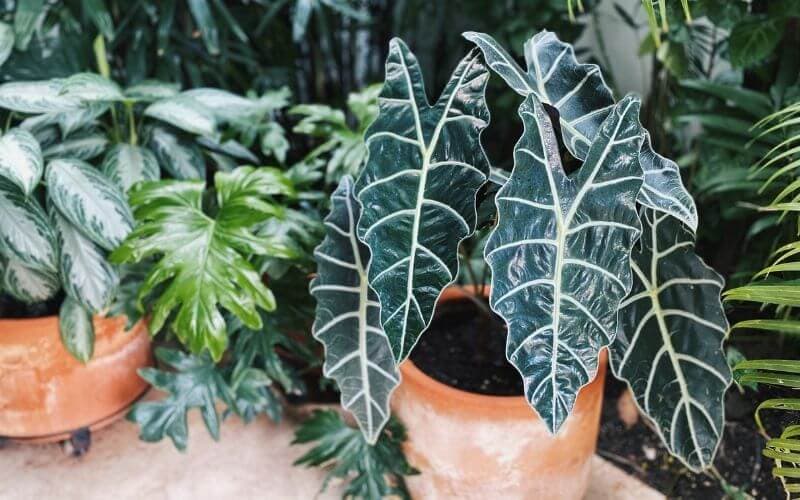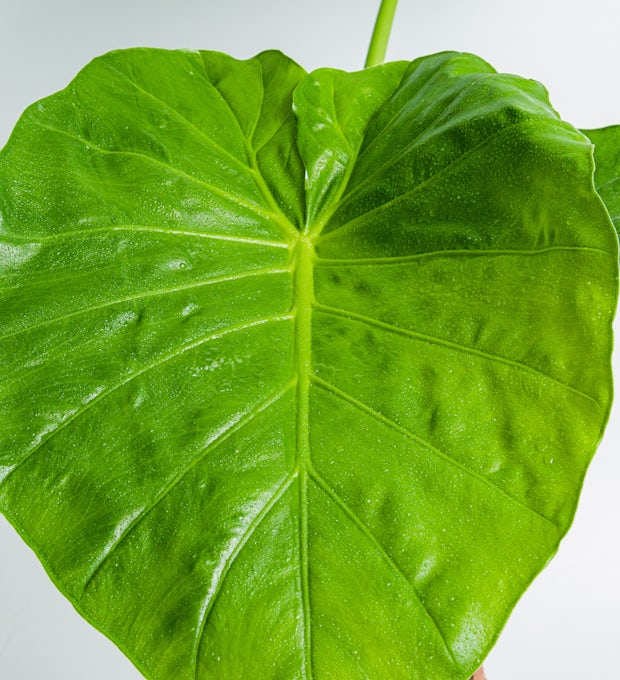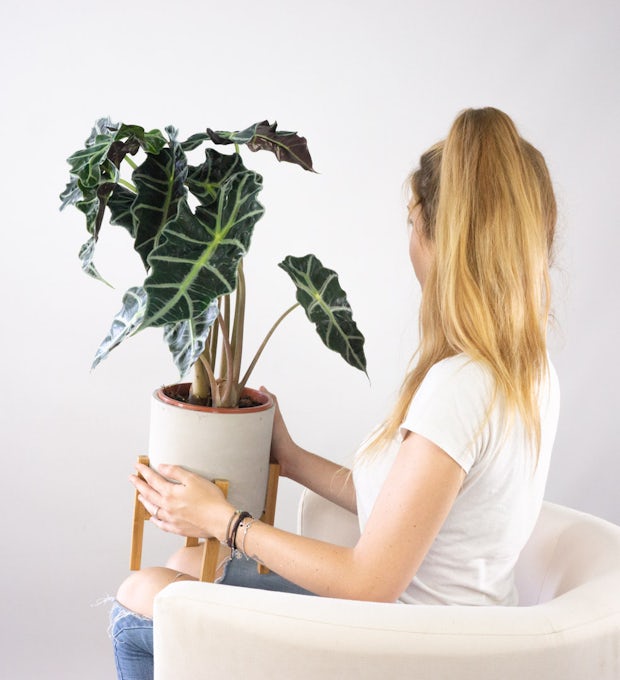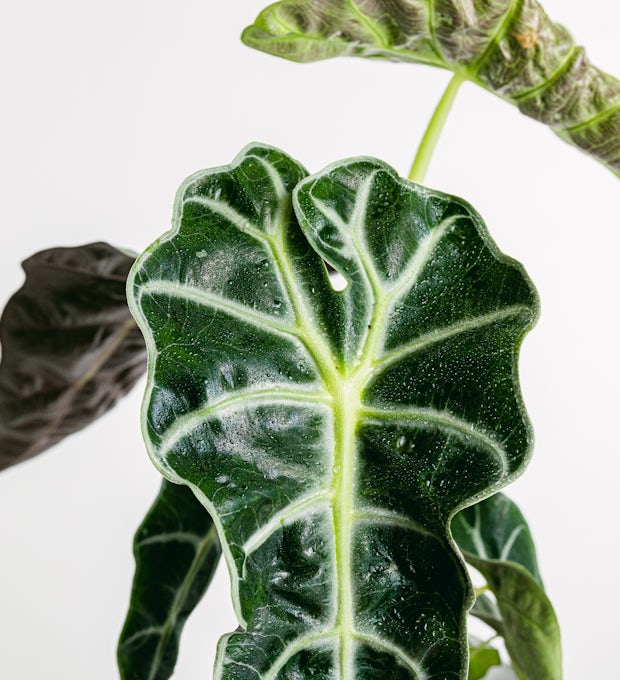Looking to add some exotic vibes to your indoor oasis? Well, let me introduce you to the African Mask Plant, also known as Alocasia.
With its lush green leaves and striking veins, this beauty is sure to steal the show in any space.
In my article, African Mask Plant: The Secrets to Thriving, Ill spill all the tea on how to care for this unique plant.
Get ready to unlock the secrets to successfully cultivating and nurturing this stunning plant. Lets dive in!
The African mask plant, also known as Alocasia Amazonica, is a popular houseplant known for its unique, sculptural leaves that resemble an elephant’s ear. With its tropical origins, providing the right soil is key to keeping your African mask happy and healthy. So what exactly should you be looking for when choosing soil for your African mask? This article will walk you through the ideal soil composition and factors to consider when picking the perfect potting mix.
The Ideal Soil Composition
African mask plants prefer a rich, fertile, and loose potting mix that allows their roots to spread and breathe easily Here are some key ingredients to look for
-
Peat or coco coir: Retains moisture but still provides air pockets for drainage and breathability. Aim for about 20-30% of your mix.
-
Compost or worm castings: Adds beneficial microbes and nutrients. Compost boosts soil fertility.
-
Perlite or pumice Lightens the soil texture for better aeration Perlite also helps retain some moisture Use about 20-30% perlite or 10-20% pumice,
-
Bark or charcoal: Further improves drainage and aeration. Look for fine orchid bark or horticultural charcoal. Use 10-20% in your mix.
-
Organic potting mix: Use a high quality, organic potting mix as your base, about 30-50% of the total mix. Avoid mixes with wetting agents or perlite.
Ideally, your African mask soil should have excellent drainage, moisture retention, and lots of natural nutrients for healthy growth. Be sure to avoid heavy, dense potting mixes or those with water-absorbing crystals.
Other Factors to Consider
Along with the right soil ingredients, here are some other factors to keep in mind when choosing a potting mix:
-
Porosity: Look for mixes specifically formulated for aroids or orchids. These feature a nice balance of pore space for drainage and moisture retention.
-
pH level: African masks grow best in slightly acidic soil with a pH of around 6.0-6.5. Pick an organic, peat-based mix.
-
Fertilizer: While most potting mixes contain some initial fertilizer, you’ll need to regularly feed your plant. Choose a mix without excessive amounts of fertilizer so you can better control nutrition.
-
Houseplant focus: Pick a mix designed specifically for houseplants, not outdoor gardening. These are typically sterilized and made for containers.
-
No water-absorbing crystals: Avoid any mixes with acrylamides, gels or water-absorbing polymers as these can stay overly damp.
-
Reputable brand: Stick with a reputable, high-quality potting mix brand designed for exotic houseplants like Black Gold or Fox Farm. Beware cheap generic brands.
Mixing Your Own African Mask Soil
For the ultimate control over your soil composition, you can easily mix your own African mask potting soil using the ingredients listed above.
Aim for a blend of:
-
1 part peat or coco coir for moisture retention
-
1 part perlite or pumice for drainage
-
1 part compost, worm castings, or bark for nutrients
-
1 part organic potting soil as a base
Thoroughly mix the ingredients together in a large container or wheelbarrow. For a large batch, you may need to mix it up with a shovel. For just a pot or two, mixing by hand will suffice.
Be sure your homemade blend still offers the right ratio of drainage, aeration, and moisture retention for your plant. Test it out before repotting your African mask into your custom soil.
Time for Repotting
African mask plants tend to grow rapidly when happy. You may need to repot your plant each spring as the roots can quickly become crowded.
When repotting:
-
Gently remove from the old pot and loosen any circled roots
-
Prune off any dead or damaged roots
-
Choose a pot only 1-2 inches larger to avoid overpotting
-
Fill the new container about 1/3 full with your fresh soil mix
-
Place the plant inside and fill soil around the roots and base
-
Water thoroughly once repotted to remove air pockets
Providing new, high quality potting mix gives fresh nutrients for the growing season. Just be careful not to damage the sensitive root system when repotting your African mask.
Keep Your Soil Healthy
To keep your custom soil mix replenished with nutrients, consider:
-
Top dressing with worm castings or compost every 2-3 months
-
Mixing in a slow release organic fertilizer as needed
-
Adding beneficial microbes to aid nutrient absorption
-
Repotting annually with a fresh batch of soil
Avoid letting your African mask soil dry out completely. But equally important is not keeping it soggy, as aroids are prone to root rot. Check moisture levels frequently and water when the top few inches become dry.
Choosing and maintaining the right soil is crucial for growing big, beautiful African mask plants. Follow these tips to help keep your plant’s roots healthy and provide the nutrients it needs to thrive indoors.

African Mask Plant Traits
As a plant enthusiast, Ive come to appreciate the unique traits of the African Mask Plant. Native to the tropical rainforests of Southeast Asia, this plant thrives in its natural habitat of warm, humid environments.
With its striking growth patterns, the African Mask Plant can grow tall and spread out, becoming a low, wide floor plant. Alocasia Polly, a popular variety of the African Mask Plant, reaches a maximum size of 2 x 2 feet, while other Alocasias can grow as tall as 4-6 feet. These plants have a moderate growth rate, especially during the spring and summer months.
The deep green leaves with pronounced veins are a distinguishing feature of this plant, adding to its overall appeal.
African Mask Plant Care
When caring for the African Mask Plant, its important to provide the right conditions and maintenance to ensure its optimal growth and health. Here are three key aspects to consider:




- Watering schedule: The African Mask Plant prefers to be kept consistently moist, but not soggy. In warmer months, water the plant every six to seven days, and adjust the frequency during its semi-dormant phase in fall or winter. Factors like pot size, soil type, location, and home environment can affect the watering needs, so its important to monitor the moisture level of the soil.
- Humidity requirements: Moderate to high humidity is crucial for the African Mask Plant. While the average houseplant enjoys around 50% humidity, this plant may suffer in areas with low humidity, like Tucson where it can be as low as 12%. Increase humidity by using saucers with water, misting the plant, using humidifiers, or using a humidity meter. Avoid letting the roots sit in water to prevent root rot.
- Soil mix: The African Mask Plant thrives in a well-draining soil mix. A recommended recipe is a combination of 1/3 coco chips, 1/3 pumice (perlite is fine too), and 1/3 potting soil. Adding charcoal can improve drainage, and incorporating organic compost when planting provides additional nutrients. Top dressing with worm compost and compost can also be beneficial.
How to Take Care of Your African Mask Plant
FAQ
What is the best soil mix for African mask plant?
What soil should I use for Alocasia?
Do African mask plants like to be misted?
